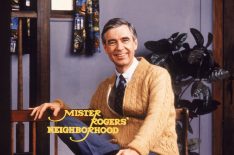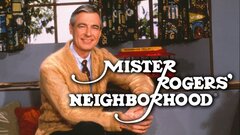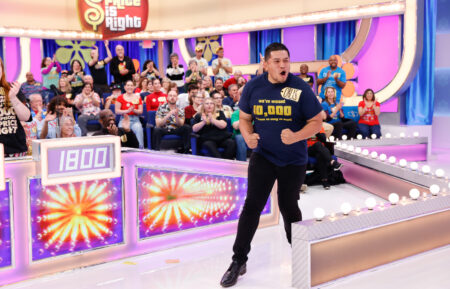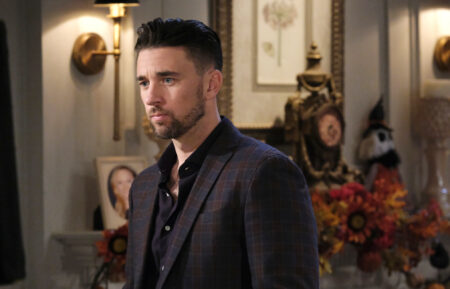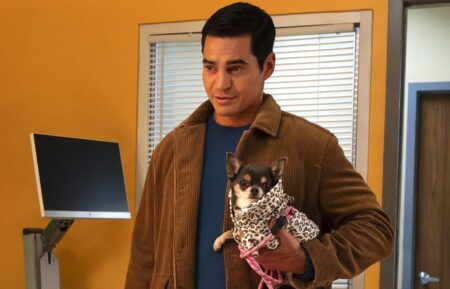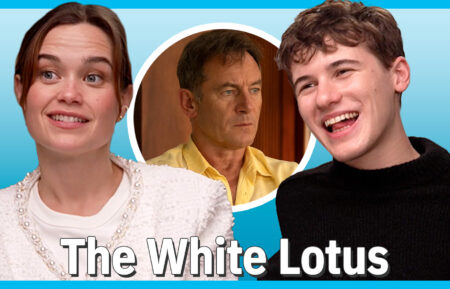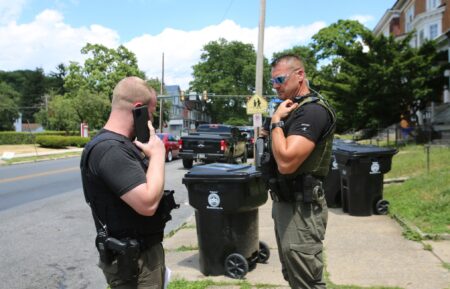20 Fun Facts About ‘Mister Rogers’ Neighborhood,’ Which Ended 20 Years Ago
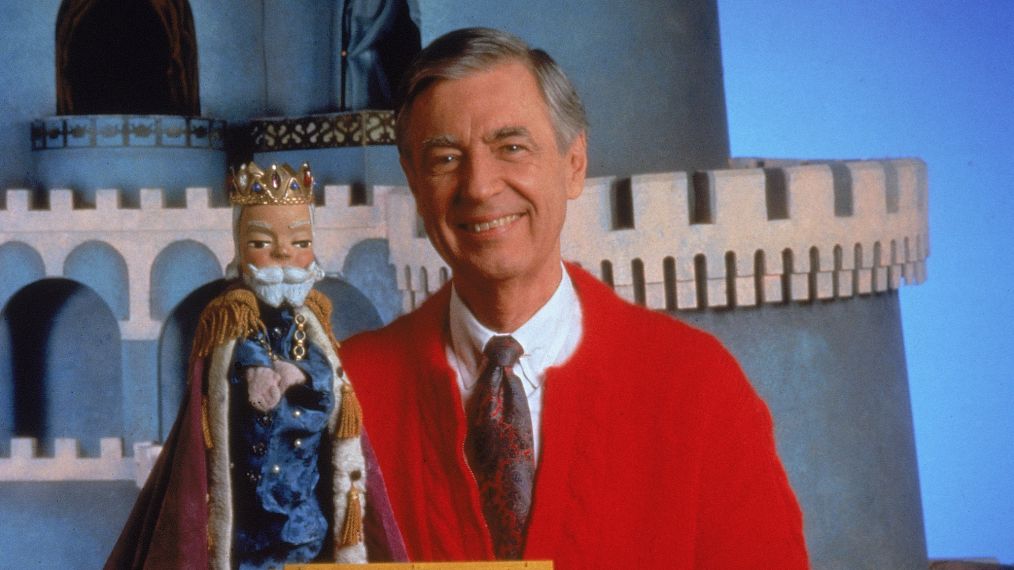
Two decades after Mister Rogers’ Neighborhood ended its record-breaking run, who among us wouldn’t wish for just one more beautiful day in the neighborhood? Or, perhaps, one more trolley ride through the Neighborhood of Make-Believe?
The PBS show aired its final episode on August 31, 2001, after more than 900 episodes across 31 seasons of public television, during which host Fred Rogers gently guided children (and children at heart) through important life lessons—after changing into his cardigan and sneakers, of course.
To celebrate the legacy of Mister Rogers’ Neighborhood—on top of the 2018 documentary Won’t You Be My Neighbor? and the 2019 Tom Hanks biopic A Beautiful Day in the Neighborhood—we’ve wrangled 20 trivia tidbits about the landmark show.
Rogers introduced many of the show’s characters on an earlier show, The Children’s Corner.
Though he stayed behind the scenes, Rogers was a puppeteer and organist on the WQED show, which premiered in 1954 and marked the first appearances of future Mister Rogers’ Neighborhood characters including King Friday XIII, X the Owl, Henrietta Pussycat, and Lady Elaine Fairchilde. And Daniel Striped Tiger, whom Rogers voiced for nearly 50 years after the character made his debut in the show’s premiere, was named after Dorothy Daniel, the WQED station manager who gave Rogers the puppet on the eve of filming.
He also hosted Misterogers a precursor to the more famous Mister Rogers’ Neighborhood
Rogers made his on-camera debut in the 1963 Canadian show Misterogers, and he incorporated elements of that show into Mister Rogers’ Neighborhood after moving back to Pittsburgh with his family in 1966.
Rogers’ speech at a Senate subcommittee helped save the $20 million budget for public broadcast.
After Rogers’ 1969 speech before the U.S. Senate Subcommittee on Communications, Sen. John O. Pastore was sold on the value of shows like Mister Rogers’ Neighborhood. “I think it’s wonderful. I think it’s wonderful,” Pastore told Rogers. “Looks like you just earned the $20 million.”
Until 1975, Rogers and his colleagues were making 65 episodes a year.
From Season 9 until the end of the series, episode counts were much more manageable, usually 15 episodes per year.
Jazz pianist Johnny Costa provided the music for the show.
The musician, alongside bassist Carl McVicker Jr. and Bobby Rawsthorne, often played music for Mister Rogers’ Neighborhood live in the studio, and Costa and Rogers agreed that the instrumentals shouldn’t be dumbed down for its young audience.
Rogers’ mother knit the sweaters he wore on the show.
Nancy McFeely Rogers made a new sweater every Christmas until her death in 1981, and one of the sweaters is now in the collection of the Smithsonian’s National Museum of American History.
His grandfather inspired his closing monologue.
Per The New York Times, Rogers said, “I think it was when I was leaving one time to go home after our time together that my grandfather said to me: ‘You know, you made this day a really special day. Just by being yourself. There’s only one person in the world like you. And I happen to like you just the way you are.’”
Rogers also honored his grandfather with the character of Mr. McFeely.
When naming the fictional neighborhood’s Speedy Delivery man, Rogers used his middle name, which was also his grandfather’s surname, McFeely.
He may have named Lady Elaine Fairchilde after a family member, too.
“My sister was adopted when she was 6 months old and I was 11 years old. And her name is Elaine,” Rogers once said. “We tease her because she thinks that I must have named Lady Elaine Fairchilde for her.”
Rogers made a point of narrating his fish-feeding because of a letter from a fan.
The latter, sent from a blind fan, read: “Dear Mister Rogers, Please say when you are feeding your fish, because I worry about them. I can’t see if you are feeding them, so please say you are feeding them out loud. Katie, age 5.”
The host held guest stars to high standards.
After Rogers’ death, Joe Negri—who played the royal handyman in the Neighborhood of Make-Believe—told the Associated Press that the host wouldn’t accept unenthusiastic performances from guest stars who thought they could phone in their appearances on a children’s show.
The gorilla Koko took off Rogers’ shoes.
Koko, the gorilla who famously learned American Sign Language, watched Mister Rogers’ Neighborhood, and when TV host met ape, she took off his shoes just as she had seen him do countless times on television.
The trolley traveled 5,000 miles every year during the show.
And actor Michael Keaton—of Batman and Birdman fame—started his career operating the trolley.
Rogers helped create an amusement park ride based on the trolley.
The TV host designed the storyline for a trolley ride, Mister Rogers’ Neighborhood of Make-Believe, which operated from 1989 to 2013 at Idlewild Park in Latrobe, Pennsylvania.
For years, Mister Rogers’ Neighborhood ranked the longest-running U.S. children’s television show.
The show started its 31-season run in 1968. Sesame Street, which eventually surpassed Mister Rogers to become the record-holder, premiered the following year.
Rogers voiced an aardvark version of himself in a 1997 Arthur episode.
And in 1999, Rogers brought an Arthur puppet onto Mister Rogers’ Neighborhood in an episode about the making of his Arthur appearance.
PBS helped parents tell their kids about Rogers’ death.
After Rogers died in 2003, PBS published a guide for parents’ discussions with their kids about the sad news. “Remember that Fred Rogers has always helped children know that feelings are natural and normal, and that happy times and sad times are part of everyone’s life,” the network said, in part.
The show has spawned two spin-offs.
Fred Rogers Productions is behind Daniel Tiger’s Neighborhood, which premiered on PBS Kids in 2012, and Donkey Hodie, which premiered on the channel this May.
Twitch hosted a Mister Rogers’ Neighborhoodmarathon of 886 episodes.
The 2017 marathon lasted 18 days, and proceeds from viewer donations went to local PBS stations.
Michael Keaton hosted a special to honor his old boss.
PBS celebrated the 50th anniversary of Mister Rogers’ Neighborhood in 2018 with a special titled Mister Rogers: It’s You I Like, hosted by former stagehand Michael Keaton, an Oscar-nominated actor by that point.
From TV Guide Magazine
Crime, Comedy & Convenience Stores: Unwrapping Hulu's 'Deli Boys' With the Cast
Cupcakes, corndogs…and cocaine?! Two brothers find themselves in a hilarious pickle when they inherit an unseemly bodega biz in Hulu’s new comedy Deli Boys. Find out how The Sopranos and Real Housewives of Orange County influenced the cast. Read the story now on TV Insider.

